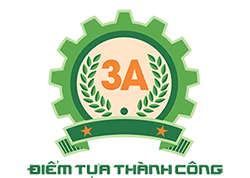Women in Vietnamese society
According to Confucian values, the life of a woman is governed by the rule of three subordinations and four virtues (tam tòng, tứ đức). At home, she is subordinated to her father, after her marriage she is subordinated to her husband, and after her husband’s death she is subordinated to, or follows, her son (Tại gia tòng phụ, xuất giá tòng phu, phu tử tòng tử). The Four Virtues: housekeeping skills, beauty, appropriate speech and moral conduct (công, dung, ngôn, hạnh).
Nguyễn Trãi, a fifteenth-century Vietnamese statesman, general, poet and scholar, described the Four Virtues of the ideal bride and daughter-in-law in these terms:
Work is every flavor of glutinous rice and cakes,
Delicate sewing and embroidering.
Countenance is solemn beauty
Without passion or untidiness.
Speech is polite, deferential language,
Conduct is the right path of piety, respect and trustworthiness.
(Công là đủ mùi xôi, thức bánh,
Nhiệm nhặt thay đường chỉ mũi kim.
Dung là nét mặt ngọc trang nghiêm,
Không tha thiết, không chiều lả tả.
Ngôn là dạy trình thưa vâng dạ,
Hạnh là đường ngay thảo kính tin.
Gia Huấn Ca)
However, despite this traditional Confucian ideal, in reality, women have played a prominent role in almost every aspect of the history of the country as well as the daily life of the Vietnamese economy. Historic figures like the two Trung Sisters (Hai Bà Trưng) are now well known to American and European historians, and Lady Trieu (Bà Triệu, also known as Trieu Au) is often mentioned a role model for modern women rights activists and American feminists.
The following paragraphs about the Trung Sisters and Lady Trieu are quoted from Vietnam, A Historyby Stanley Karnow’
A titled lady, Trung Trac, avenging the murder of her dissident husband by a Chinese commander, led the first major Vietnamese insurrection against China. She and her sister, Trung Nhi, mustered other restive nobles and their vassals, including another woman, Phung Thi Chinh who supposedly gave birth to a baby in the middle of the battle yet continued to fight with the infant strapped to her back. They vanquished the Chinese in A.D. 40 and, with the Trung sisters as queens, set up an independent state that stretched from Hue into southern China. But the Chinese crushed it only two years later, and the Trung sisters committed suicide-in aristocratic style- by throwing themselves into a river. The Vietnamese still venerate them at temples in Hanoi, Sontay and elsewhere..
Another woman, Trieu Au, the Vietnamese version of Joan of Arc, launched a revolt against China in A.D. 248, a generation after the collapse of the Han dynasty, wearing golden armor and riding an elephant as she led a thousand men into battle. Gloriously defeated at the age of twenty-three, she committed suicide rather than suffer the shame of surrender. Like the Trung sisters, she is remembered by a temple, and by her words of defiance: I want to rail against the wind and the tide, kill the whales of the sea, sweep the whole country to save the people from slavery, and I refuse to be abused.
These feminine exploits, doubtless inflated in popular legend, illustrate the status of women in Vietnamese society. In contrast to their counterparts elsewhere in Asia and even in Europe, emancipated only recently, they could traditionally inherit land, serve as trustees of ancestral cults and share their husbands ‘property’.
Hien V. Ho, MD
April 22, 2013
